Concrete is a versatile and modern material ideal for home renovations, especially in bathrooms. It’s durable, cost-effective, and easy to maintain, making it a popular choice for contemporary and minimalist styles. Here’s a detailed look at the benefits and drawbacks of using concrete in your bathroom to help you decide if it’s the right fit for you.
Advantages of Concrete in Bathrooms
1. Water Resistance: Concrete is impervious to water damage, making it an excellent choice for bathroom floors, walls, countertops, sinks, and bathtubs. You won’t have to worry about wet feet, damp towels, shower spray, or spills causing any harm.
2. Durability: Properly installed and maintained, concrete can last the lifetime of your home. Most professional installers guarantee their work for around 20 years, but with proper care, it can endure much longer, offering long-term value for your investment.
3. Low Maintenance: Concrete is easy to clean and maintain. It requires periodic sealing to prevent stains, but beyond that, it’s virtually maintenance-free. You can clean it with sweeping, vacuuming, dry-mopping, or wet-mopping. However, be cautious with cleaning agents, as some can chemically react with the concrete and cause discoloration.
4. Aesthetic Versatility: Modern finishing techniques have made concrete a stylish choice for home decor. You can customize its look with dyes added during mixing, or by staining and etching after it sets. Additionally, concrete can be stamped with patterns to give it texture, adding a unique touch to your bathroom.
Disadvantages of Concrete in Bathrooms
1. Coldness: Concrete can be cold underfoot, which might be uncomfortable in a bathroom setting. However, this can be mitigated by installing radiant floor heating.
2. Hardness: The hardness of concrete, while beneficial for durability, can be unforgiving if you drop items or if someone falls.
3. Cracking: Over time, concrete can develop cracks due to settling or shifts in the house’s foundation. While these can often be repaired, they may affect the appearance and integrity of the surface.
4. Installation Challenges: Installing concrete can be a complex process requiring skilled labor, especially for customized finishes. This can add to the initial cost and time of your renovation project.
Best Concrete Bathroom Ideas
1. Concrete Basin Bathroom
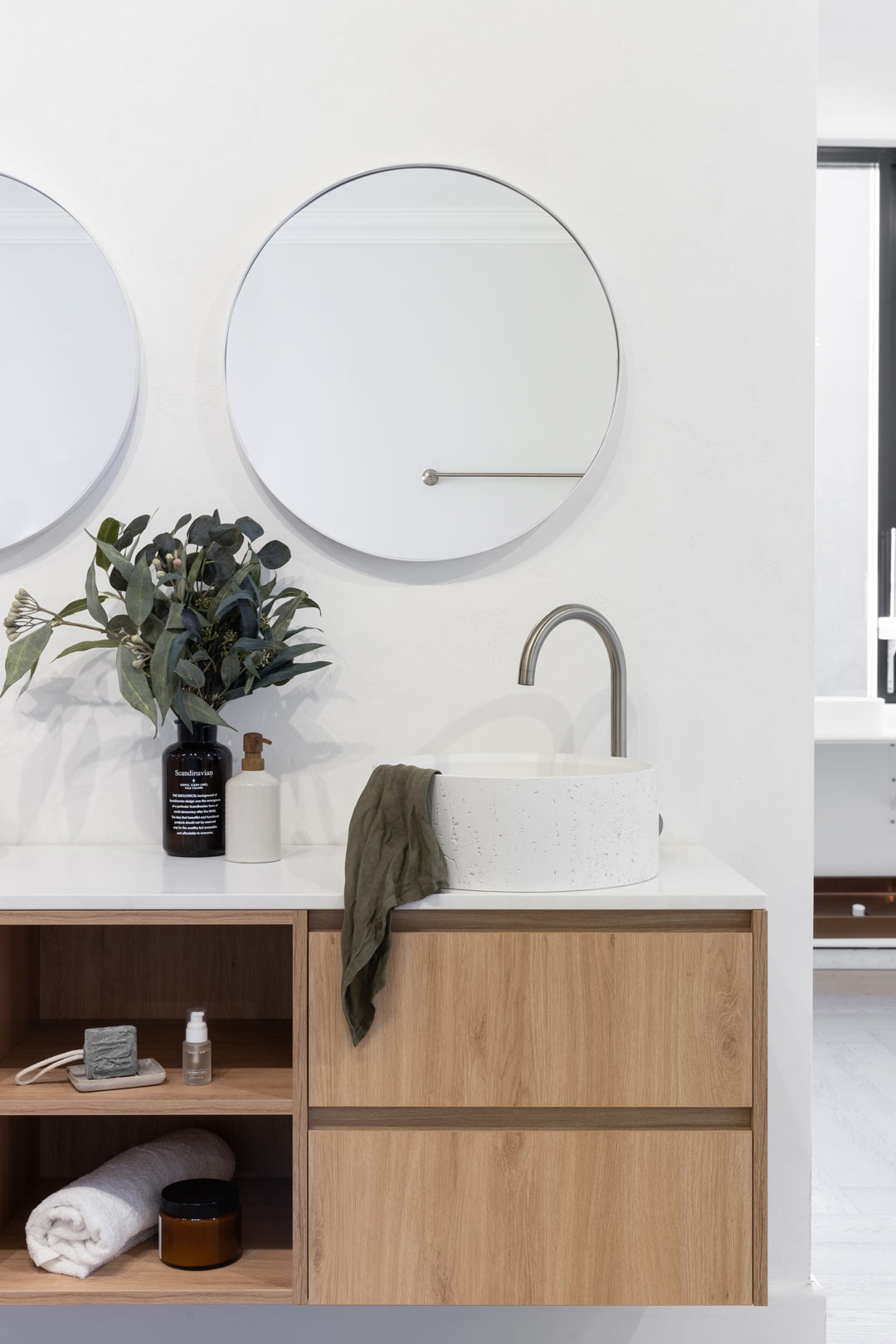
Start your exploration of concrete bathroom design with a concrete basin. Available in various colors, these basins can enhance your creative vision for the bathroom.
Opt for a high-quality concrete basin like the Atelis, designed specifically to endure bathroom conditions. Features such as a nano-sealed surface create a hydrophobic layer that prevents water absorption and protects the basin’s structure.
With its genuine concrete construction, this durable basin can serve as a lasting centerpiece in your bathroom.
2. Coloured Concrete Bathroom Walls
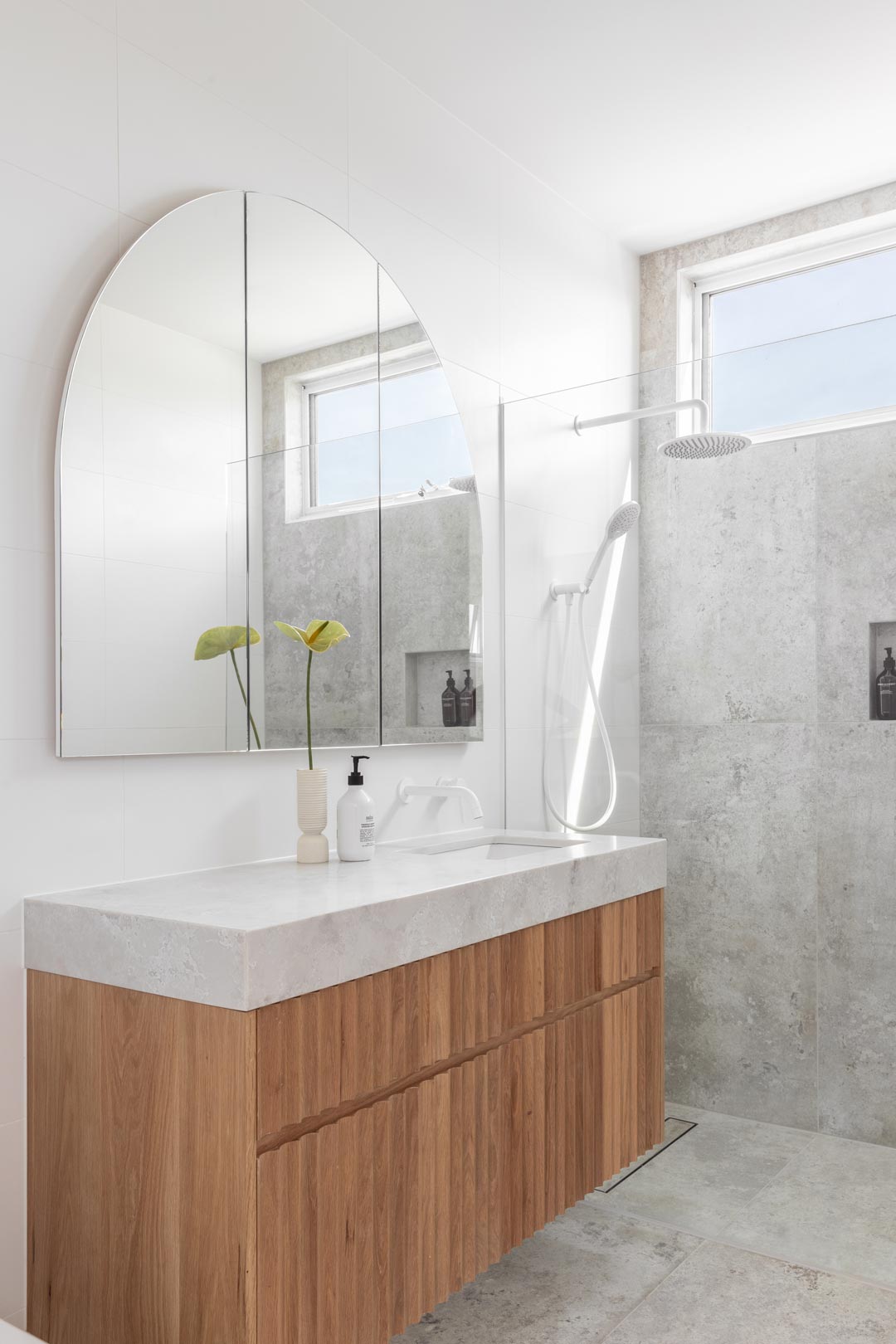
Add vibrancy to your bathroom with colored concrete walls. You don’t need to color the entire room—consider making one feature wall the focal point.
For a more understated approach, you can use concrete tiles instead. This allows you to incorporate the concrete aesthetic into specific sections of the bathroom without overwhelming the space.
3. Pendant Concrete Light Fixtures
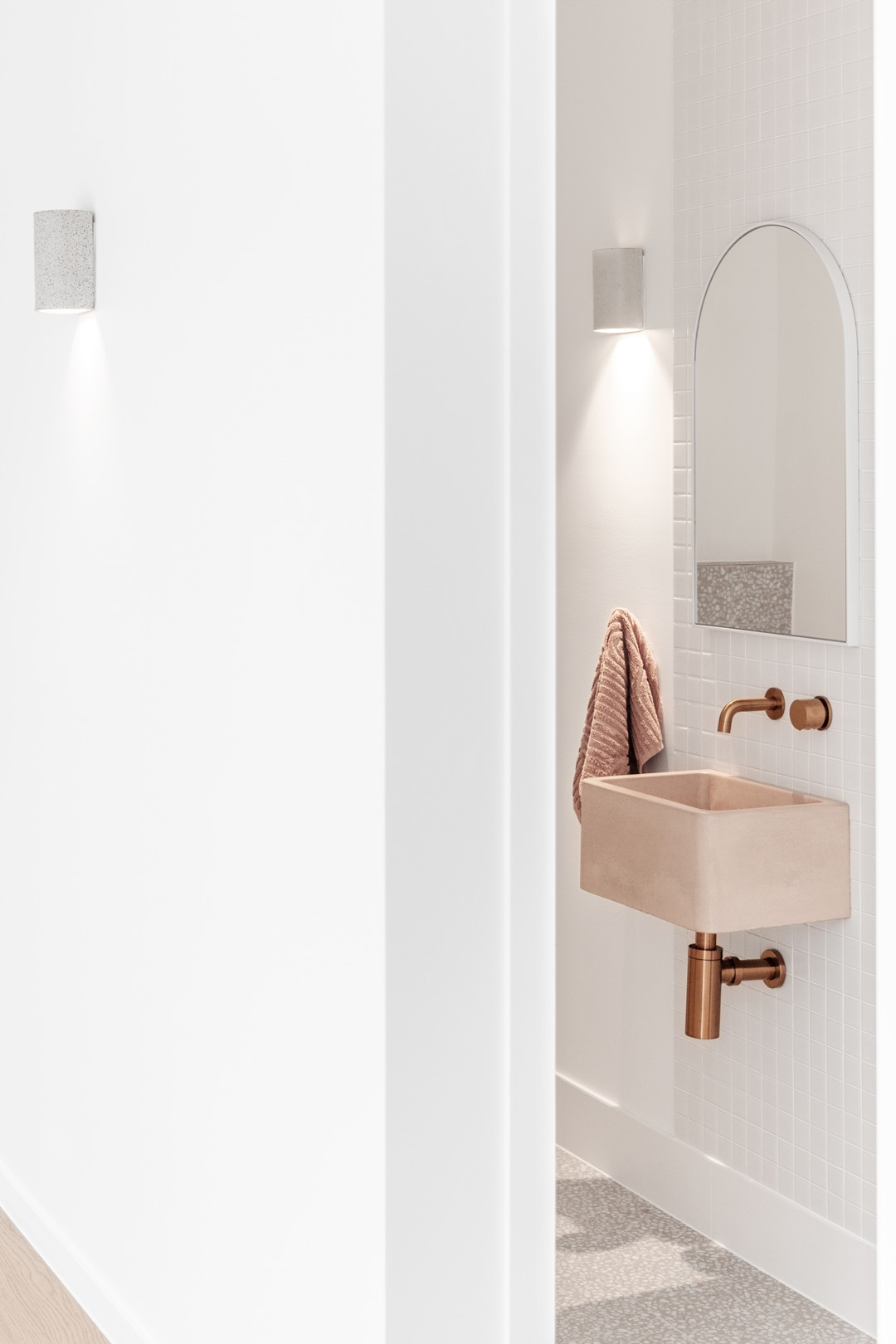
Lighting shapes our perception of space, and concrete pendant lights can transform your bathroom’s ambiance. These fixtures add an artistic touch with their raw texture, giving the space a carefully crafted look.
Concrete light fixtures are a versatile and easy upgrade that can blend seamlessly into various design styles, making them a practical choice for enhancing your bathroom.
4. Floating Concrete Bathroom Vanity
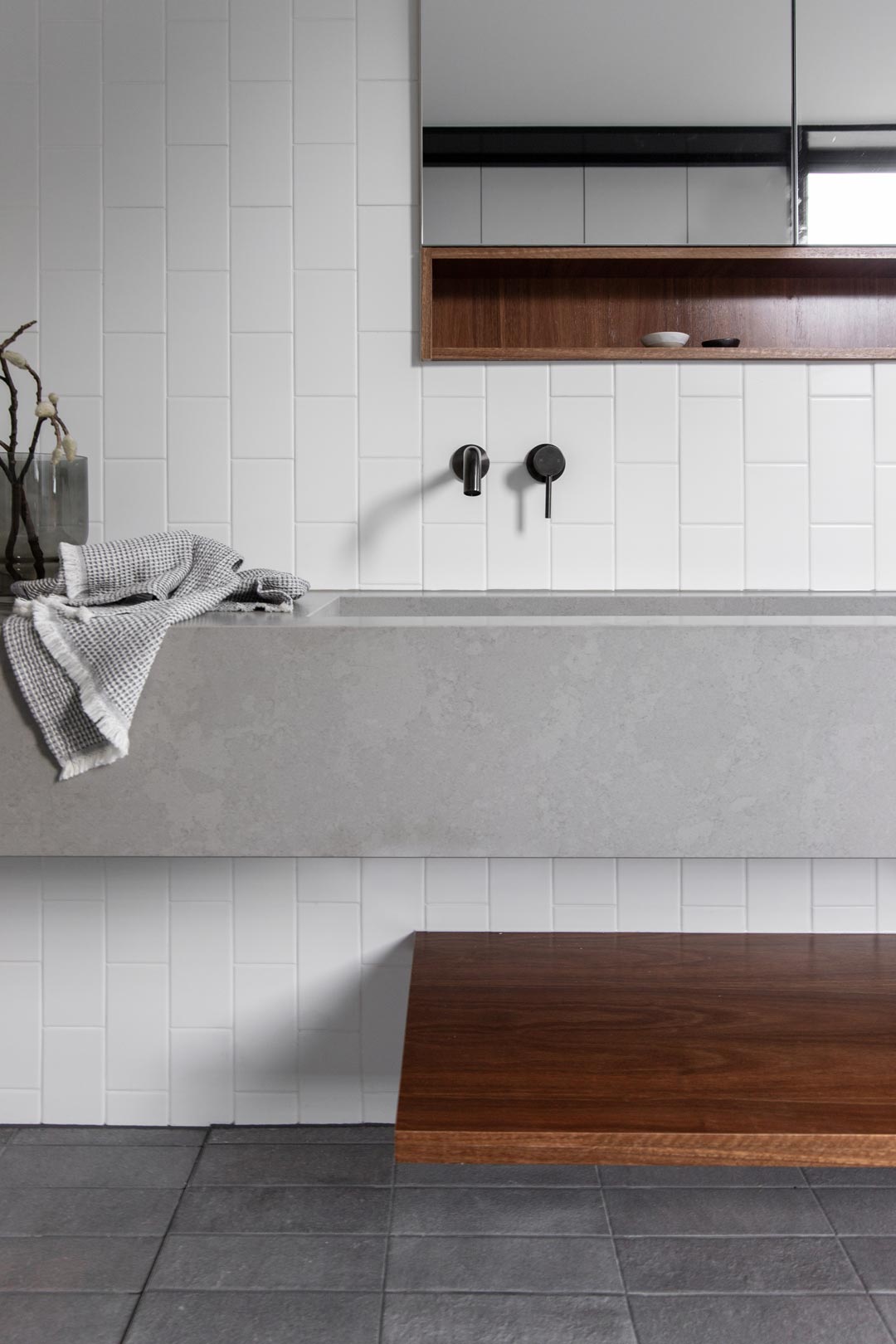
Instead of traditional bathroom countertops, consider a floating concrete vanity. It’s a modern twist where a concrete plank appears to hover above the ground, but it’s actually securely attached to the wall on at least one side.
Floating vanities, especially in smaller bathrooms, create a sense of openness and reduce visual bulkiness.
5. Concrete Recessed Niche Shelving
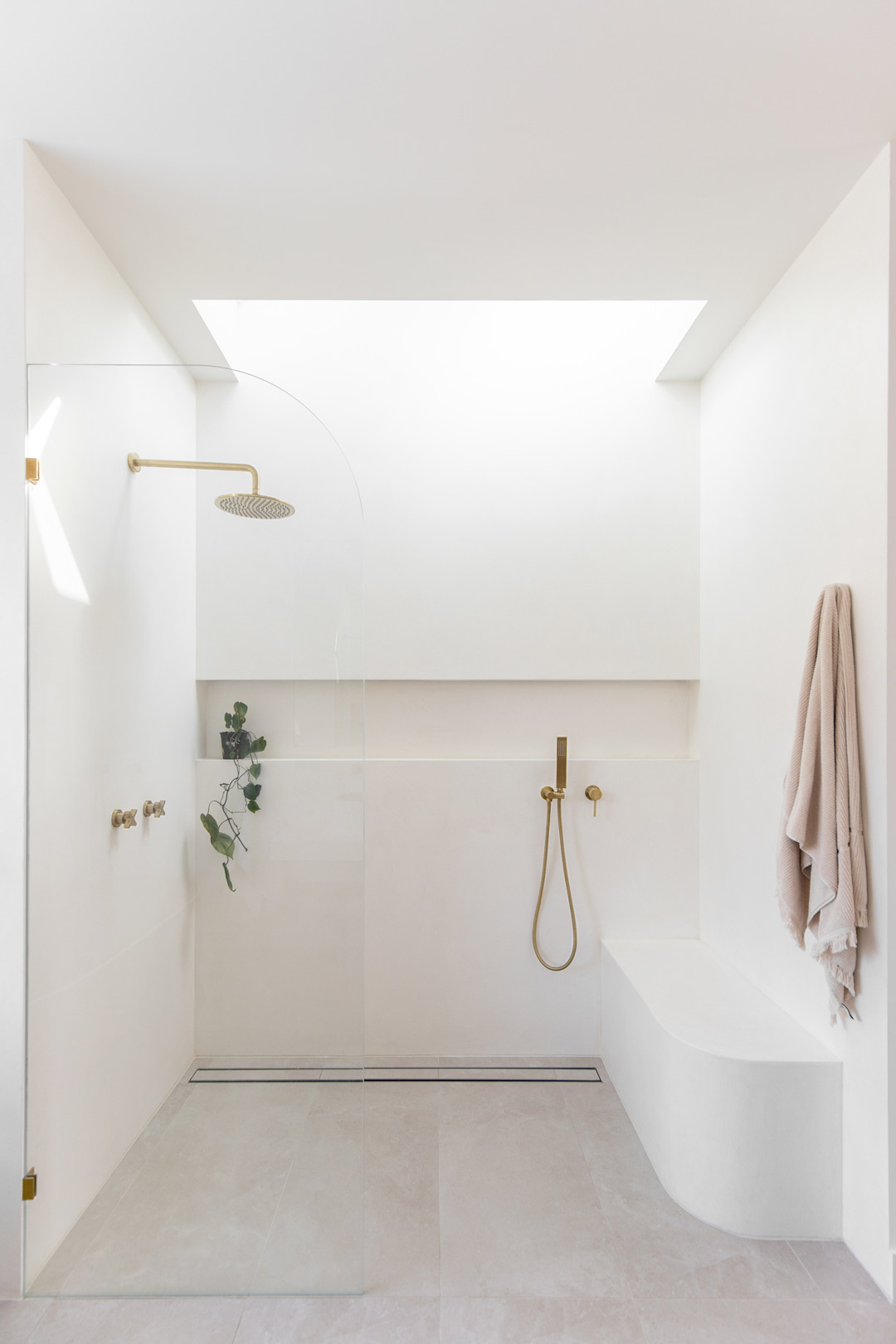
For those planning a concrete shower, incorporating recessed niches made of concrete can be a smart solution for shelving.
These niches add depth to the space and provide a unique textural element, while also serving as seamless storage options within the shower area.
6. Microcement
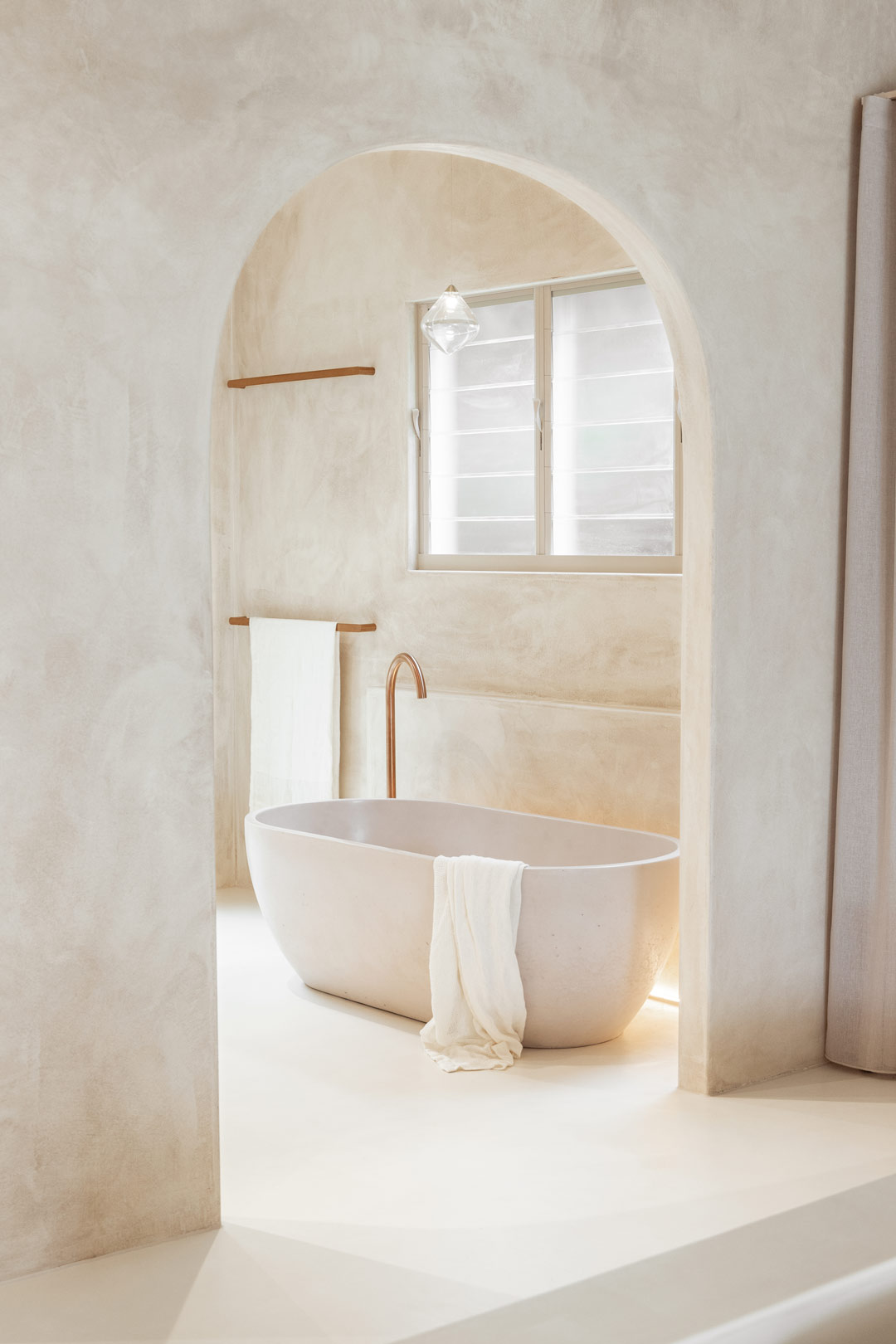
Microcement is a popular choice in the design world for its ability to mimic the appearance of concrete at a fraction of the cost. This versatile decorative coating is applied over existing surfaces and, once dried, creates a sleek concrete-like finish.
Its affordability and lightweight nature make it an attractive option for those looking to upgrade their bathroom without breaking the bank.
7. Concrete Bathroom Accessories
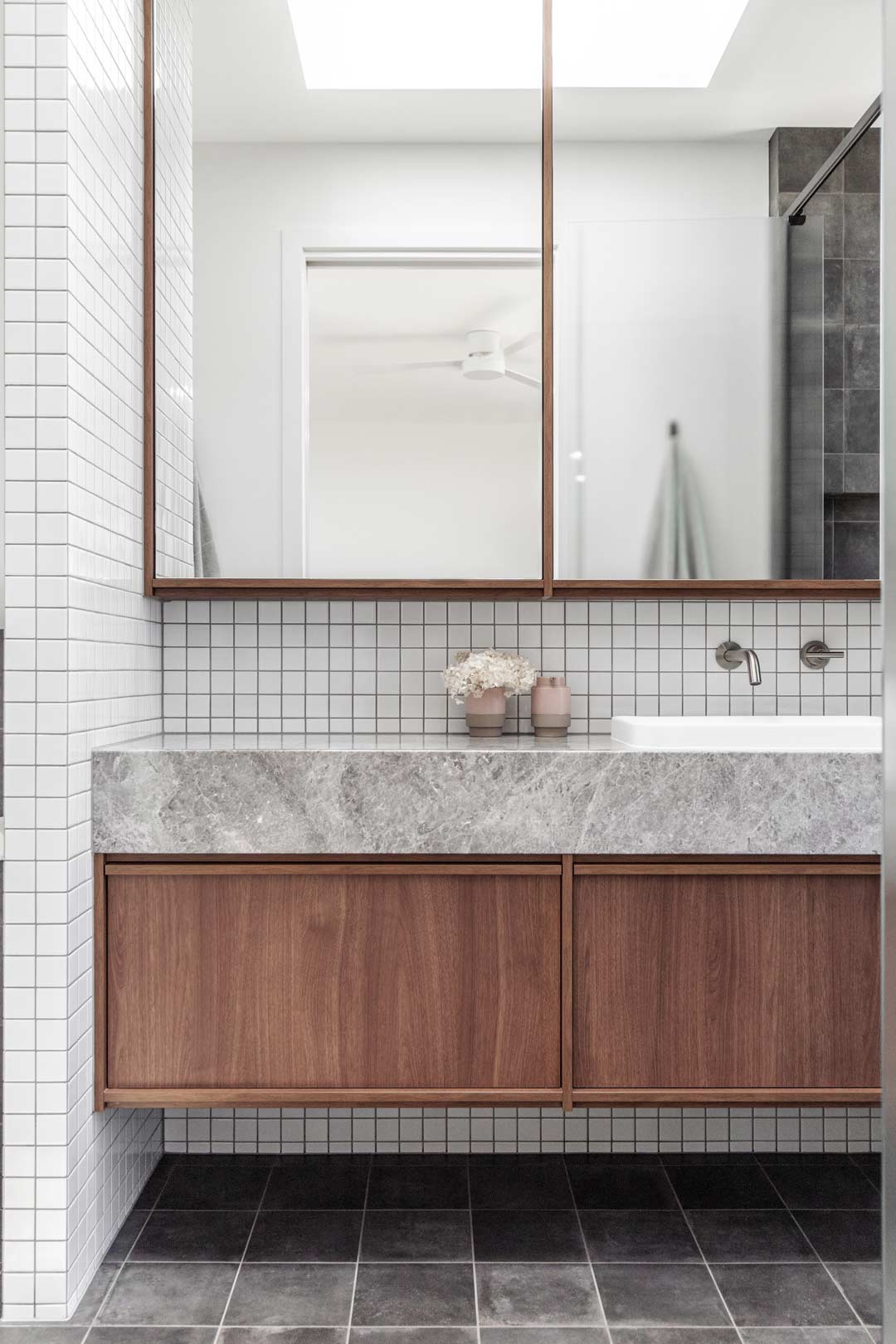
For a subtle yet stylish concrete touch in your bathroom, consider incorporating concrete accessories. From soap dishes to toothbrush holders and organization trays, there are various options available to complement your space without the need for a full renovation.
8. Sunken Concrete Bathtub
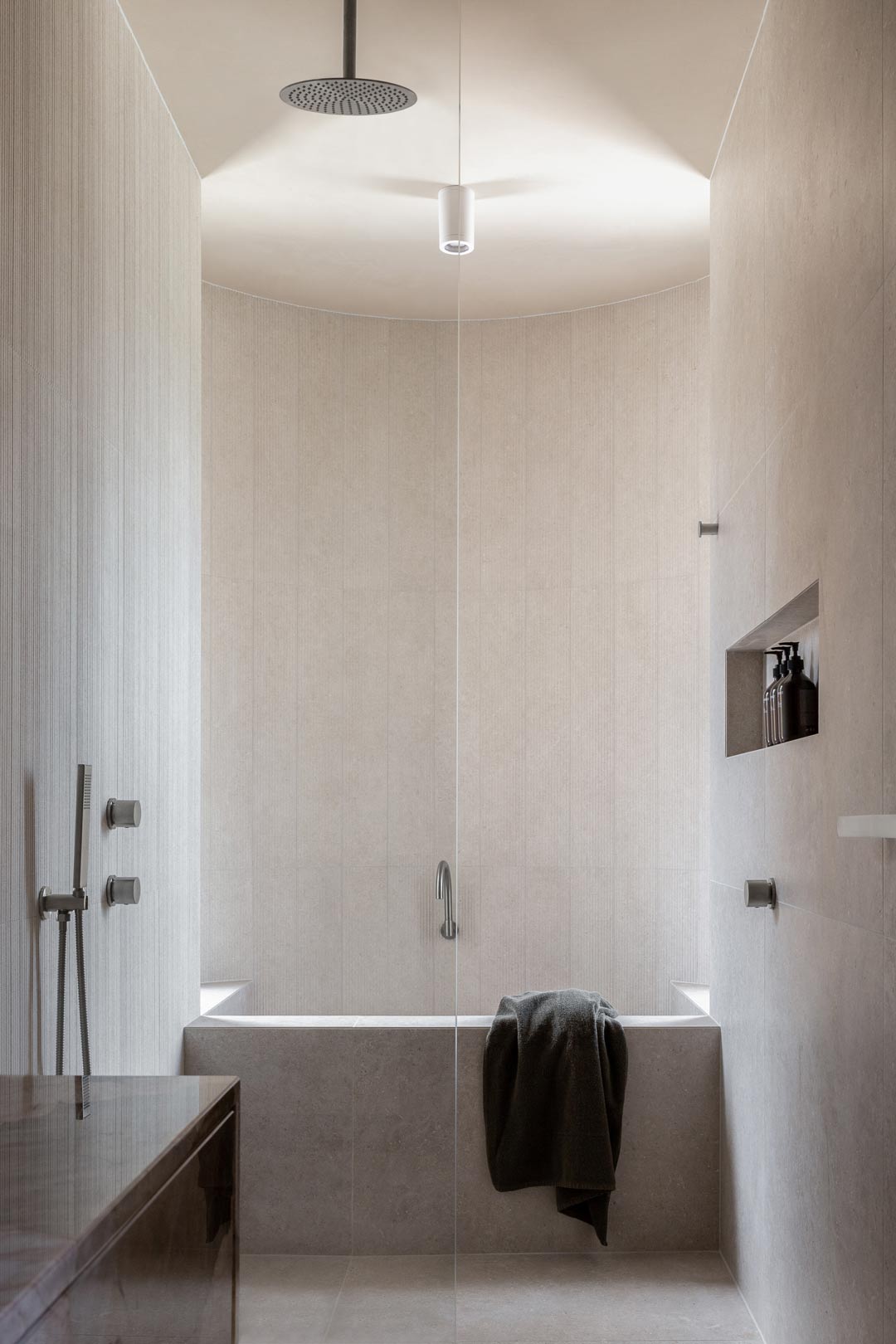
For a striking design feature, why not opt for a sunken concrete bathtub? This style of bathtub sits recessed into the floor, creating a seamless and visually appealing look reminiscent of 80s design trends.
The use of concrete adds a touch of zen, industrial flair, and Mediterranean charm to your bathroom, making it one of the most distinctive ideas for a concrete-themed bathroom.
9. Concrete Bathroom Floor
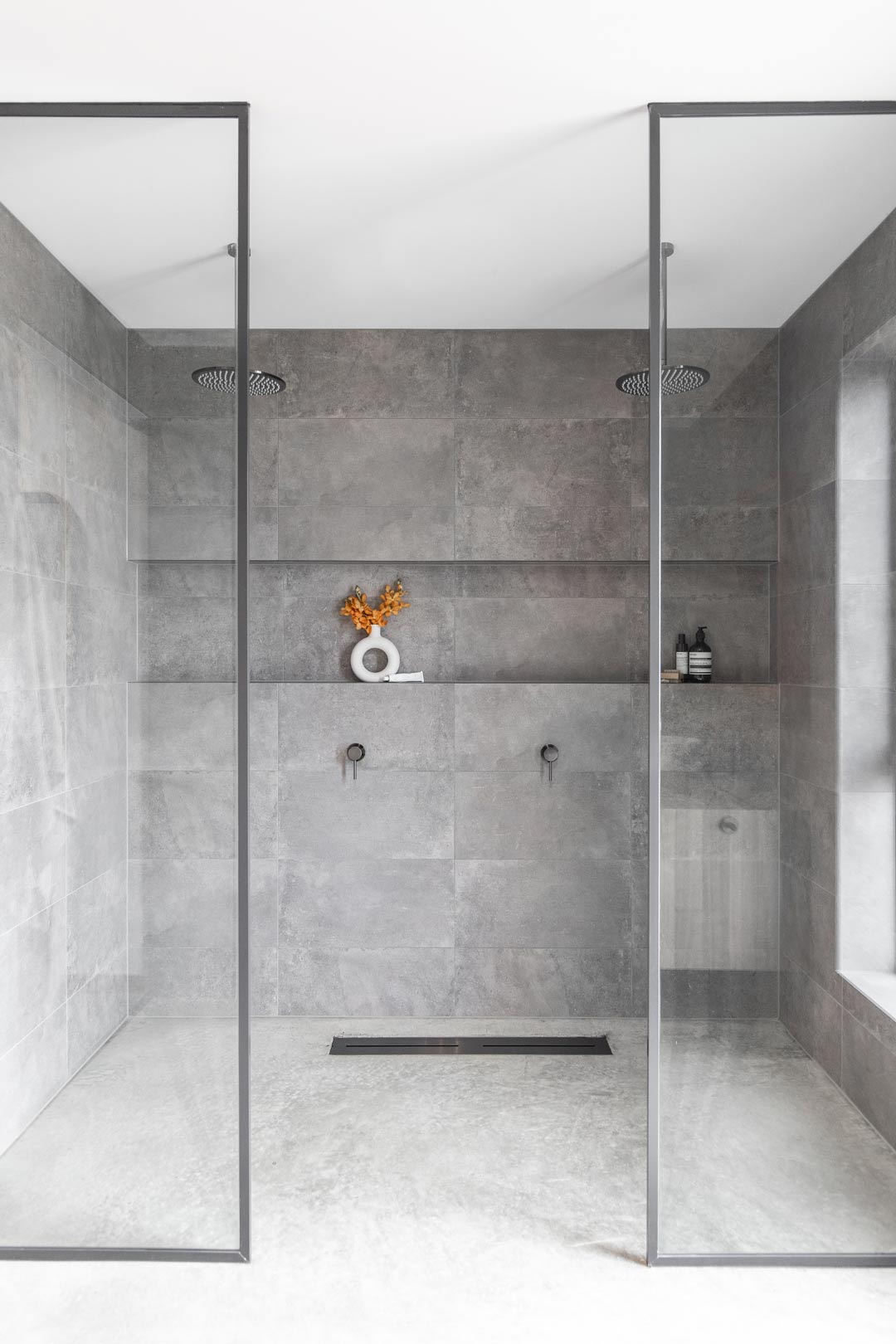
A concrete bathroom floor, when properly sealed, offers both style and practicality. It’s easy to clean and particularly suitable for wet areas like bathrooms.
Concrete has a unique property called high thermal mass, meaning it can absorb and store heat. This makes concrete floors great for passive heating and cooling. During the day, concrete absorbs heat (like sunlight) and slowly releases it at night, providing warmth when needed and cooling when it’s hot.
10. Concrete Planter Display
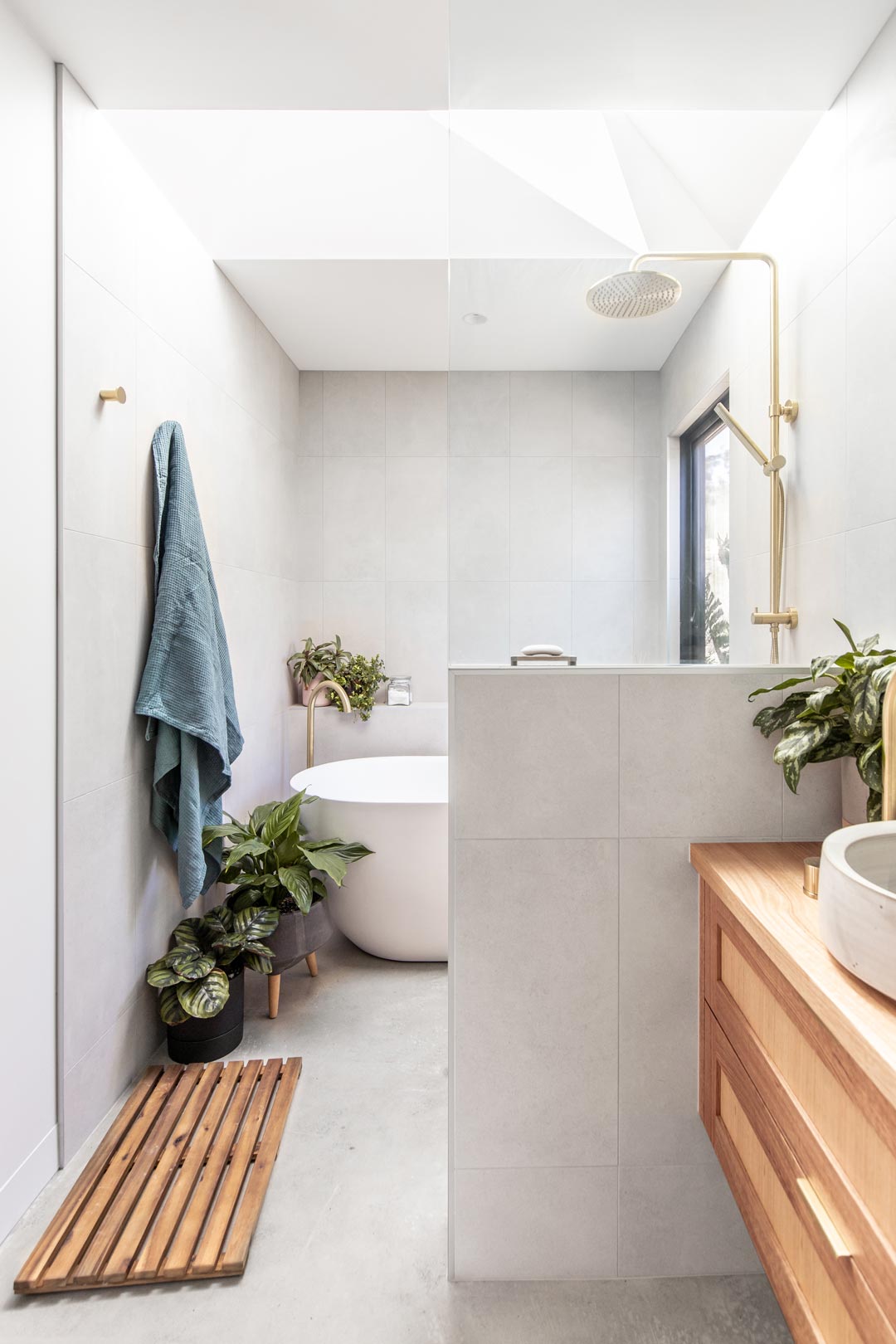
If you enjoy having plants in your bathroom, consider using concrete pots. Besides their durability, concrete pots provide insulation for the soil, keeping it warmer during winter months.
Moreover, if your bathroom is a high-traffic area where plants might be at risk of being knocked over, concrete pots offer stability due to their weight, protecting your plants from wear and wind.



